Affordable Satellite IoT? The Blues Starnote for Skylo Kit Explained!
Are you frustrated with unreliable terrestrial connectivity for your IoT projects? Wi-Fi can be unpredictable, 4G networks may fail in remote areas, and ensuring reliable communication can feel like an uphill battle. For IoT solutions that need to stay connected no matter what, the limitations of terrestrial networks can leave you searching for an out-of-this-world solution.
Enter the Blues Starnote for Skylo, a revolutionary satellite connectivity module designed to keep your IoT projects online, even in the most challenging environments. Compatible with Blues Notecards, the Starnote for Skylo provides a last-resort satellite connection that steps in when traditional networks fail. Whether you're tracking assets across borders, monitoring remote sensors, or safeguarding smart city infrastructure, the Blues Starnote for Skylo ensures your devices can always phone home.
This space-age connectivity solution combines simplicity, transparency, and reliability, making it a game-changer for makers, developers, and professionals. In this article, we’ll explore how the Blues Starnote for Skylo works, why it’s an essential tool for IoT projects, and how you can get started using it today.
What You’ll Need
Before diving into the world of satellite connectivity with the Blues Starnote for Skylo, you’ll need to gather a few essential components. These tools will ensure seamless integration and help you get started with your IoT projects.
Required Hardware
- Blues Dev Kit: This is the core platform that works with Blues Notecards, enabling easy setup and integration for your projects.
- Starnote for Skylo Starter Kit: The key to unlocking satellite connectivity for your IoT devices. It pairs with your existing Notecard devices to provide last-resort communication capabilities.
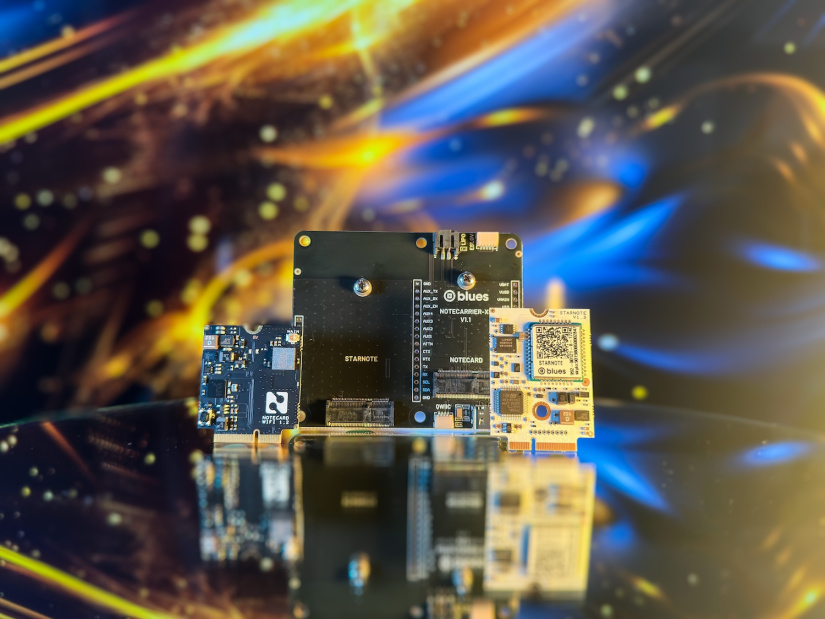
Optional Tools
For advanced applications, consider using peripherals such as:
- Accelerometers: Ideal for asset tracking and monitoring impacts on valuable goods during transit.
- Sensors: Useful for collecting environmental data, such as temperature, pressure, or humidity, in remote areas.
With these tools in hand, you’ll be ready to explore the power of satellite communication and take your IoT projects to new heights.
The Trouble with Terrestrial Connectivity
Modern connectivity technologies like Wi-Fi, Bluetooth, and cellular networks have transformed the way we interact with the world. However, these technologies come with limitations that can hinder their reliability in remote locations or mission-critical scenarios.
Challenges with Current Connectivity Options
- Wi-Fi: While ideal for high-bandwidth tasks, Wi-Fi struggles with limited range and requires access to a stable network infrastructure.
- Bluetooth: Great for short-range, low-power communication but unsuitable for long-distance or large-scale applications.
- Cellular Networks: Often the go-to for roaming devices, but they come with high costs, coverage gaps in remote areas, and inconsistent signal strength.
Even when these technologies work well in urban environments, they may fail in regions with poor infrastructure or in scenarios where uninterrupted communication is critical.
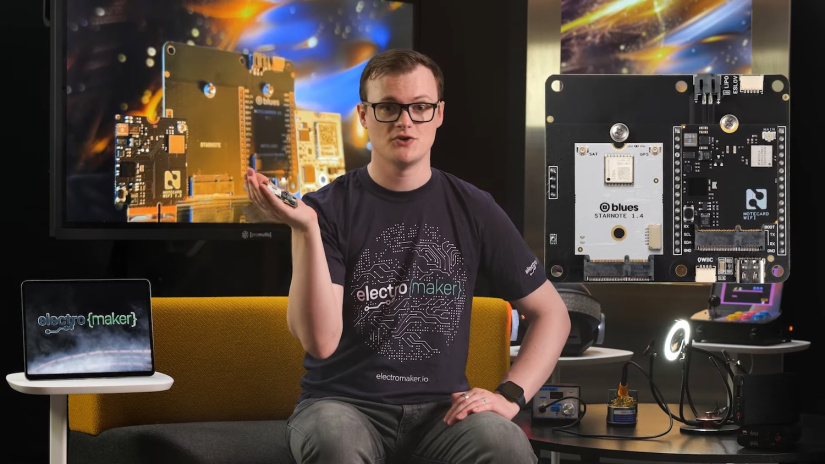
The Need for Redundancy
For applications that cannot afford downtime—such as asset tracking, industrial monitoring, or emergency systems—reliable backup connectivity is essential. A single point of failure, whether due to network outages or geographic limitations, can lead to significant consequences.
This is where satellite connectivity shines. By providing coverage in areas where terrestrial networks fall short, satellite communication ensures that your devices remain online, even in the most challenging environments. When combined with existing Wi-Fi and cellular options, satellite connectivity acts as a powerful last-resort solution, ensuring redundancy and reliability for your IoT projects.
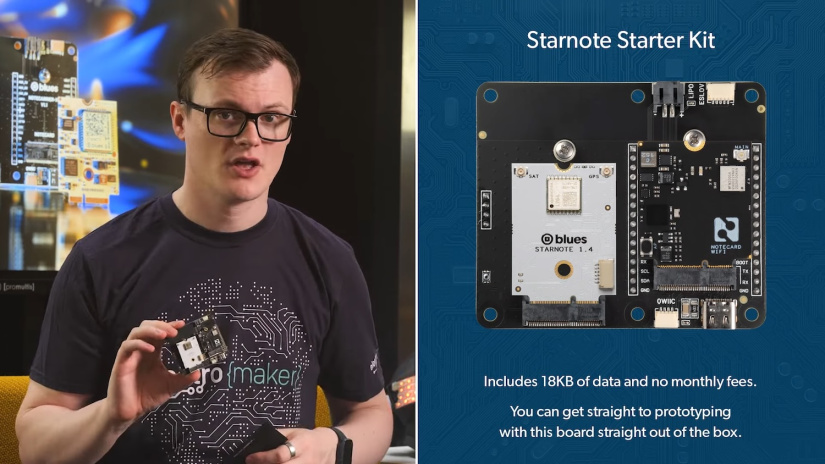
Introducing the Blues Starnote for Skylo
The Blues Starnote for Skylo is an innovative satellite add-on designed to work seamlessly with existing Blues Notecards. It provides a reliable, last-resort connectivity solution for IoT projects, stepping in only when other options, such as Wi-Fi or cellular networks, are unavailable. This ensures that your devices can stay connected even in the most remote or challenging locations.
Key Features
- Pre-installed hardware: The Starnote for Skylo is ready to deliver instant satellite connectivity right out of the box.
- Simple integration: Communicate with the Starnote for Skylo using JSON commands over UART or leverage pre-built Arduino libraries for fast and easy coding.
- Transparent pricing: No subscription requirements or hidden fees—just a clear, pay-as-you-go model for additional data.
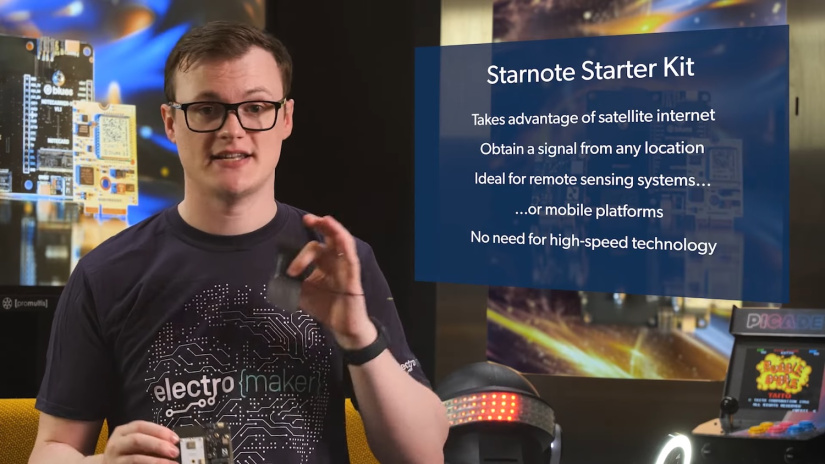
Data Specifications
Every Starnote for Skylo comes with 18KB of free, non-expiring data. While this may seem small, it is optimized for IoT projects that send tiny data packets. For example:
- Sending one 50-byte message per day means the included data could last for a full year.
- Ideal for transmitting occasional status updates, alerts, or other critical information.
Coverage Limitations
While the Starnote for Skylo offers broad satellite coverage, it is subject to the constraints of satellite service providers. This means it works in most land areas but excludes certain regions, such as the open ocean and a few specific nations. Always check the coverage map to ensure it meets your project’s requirements.
With its reliable connectivity, user-friendly design, and flexible pricing, the Blues Starnote for Skylo is a perfect solution for ensuring your IoT devices stay connected when you need it most.
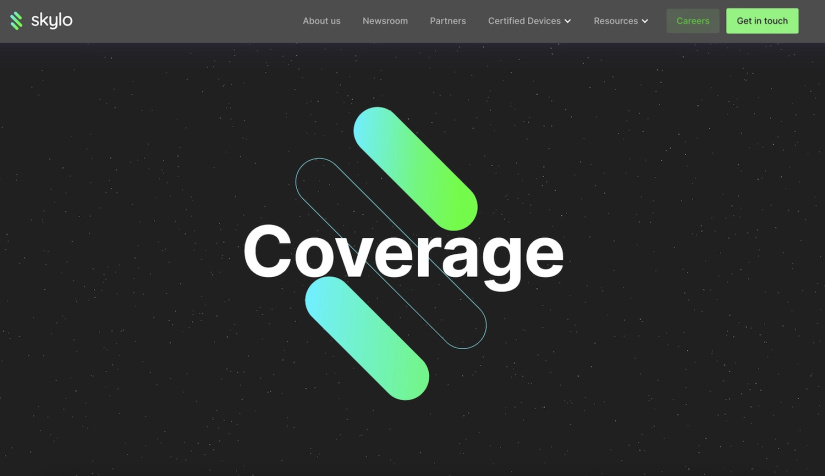
Where Can You Use the Blues Starnote for Skylo?
The Blues Starnote for Skylo opens up a world of possibilities for IoT applications requiring reliable connectivity in remote or challenging environments. Its ability to act as a last-resort communication option makes it an invaluable tool across a wide range of use cases. Checkout the Starnote for Skylo projects on the Electromaker project hub.
IoT Applications
- Asset Tracking: Keep tabs on goods, vehicles, or valuable items, even in areas with no Wi-Fi or cellular coverage.
- Example: Track cargo shipments across borders or log impacts on fragile items like antiques. An accelerometer can monitor shocks during transit, and the Starnote for Skylo can send this data when necessary.
Smart Cities
Smart city infrastructure can benefit greatly from the Starnote for Skylo’s backup connectivity. Whether during network outages or grid failures, the Starnote for Skylo ensures critical systems stay operational.
Industrial Systems
- Remote Monitoring: Use the Starnote for Skylo to connect sensors on pipelines, agricultural fields, or in remote deserts. Periodic data transmission ensures efficient monitoring of essential systems.
- While the Starnote for Skylo’s data limits prevent real-time streaming, it’s perfect for daily updates or alerts from sensors in inaccessible areas.
Creative Use Cases
- Vehicle Tracking: Monitor the location of vehicles traveling through remote countryside with no traditional network access.
- Emergency Systems: Ensure critical communication during extreme conditions, such as natural disasters or in remote expeditions.
With its flexibility and robust connectivity, the Blues Starnote for Skylo is a vital addition to projects where traditional networks fall short, enabling innovative solutions in even the most remote locations.
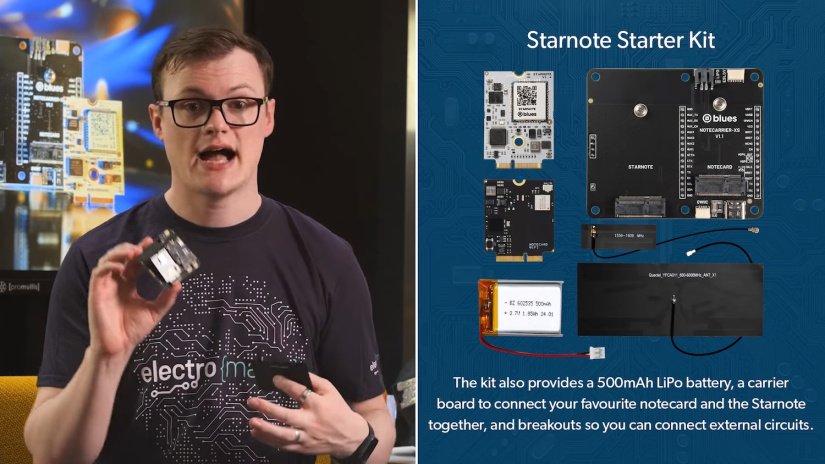
Why Choose the Blues Starnote for Skylo?
The Blues Starnote for Skylo stands out as a reliable and innovative solution for IoT projects that demand seamless connectivity. Designed with makers, developers, and professionals in mind, it combines user-friendly features, affordability, and dependable performance.
Maker-Friendly Design
- Seamless Integration: The Starnote for Skylo works effortlessly with existing Blues Notecards, making it easy to add satellite connectivity to your projects.
- Compact Form Factor: Its small size ensures easy inclusion in a variety of IoT devices, from asset trackers to industrial sensors.
Transparent Pricing
- No Subscriptions: Forget long-term commitments and hidden fees—Starnote for Skylo’s pricing model is 100% transparent.
- Pay-As-You-Go: Add data as needed, ensuring cost efficiency for both small-scale and large-scale projects.
Reliability and Accessibility
- Last-Resort Connectivity: When traditional networks fail, the Starnote for Skylo steps in to keep your devices connected.
- Versatile Applications: Suitable for everything from hobbyist experiments to mission-critical professional deployments.
By combining ease of use, affordability, and reliability, the Blues Starnote for Skylo ensures your IoT devices stay connected, even in the most challenging conditions. Whether you’re building a small project or scaling up to professional applications, the Starnote for Skylo is a smart, dependable choice.
Hands-On: Setting Up the Blues Starnote for Skylo
Getting started with the Blues Starnote for Skylo is straightforward, thanks to its compatibility with Blues Notecards and its user-friendly design. Follow these steps to pair your Starnote for Skylo with a Blues Notecard and start sending data via satellite connectivity.
Step-by-Step Guide
- Connect the Starnote for Skylo to the Blues Notecard: Use the Starnote for Skylo Starter Kit to pair the Starnote for Skylo with your existing Blues Notecard. The Starter Kit includes everything you need to establish a physical connection and prepare the device for satellite communication.
- Send JSON Commands via UART: Communicate with the Starnote for Skylo using simple JSON commands over the UART interface. This streamlined approach allows you to configure the Starnote for Skylo and transmit data with minimal effort.
Code Integration
The Blues Starnote for Skylo integrates seamlessly with the Arduino programming environment, offering pre-built libraries that simplify the coding process. Here’s a basic example to get started:
// Include the necessary library
#include <Notecard.h>
// Define communication interface
NoteUart myNotecard(9600);
void setup() {
// Initialize Notecard
NoteSetDebugOutputStream(Serial);
Serial.begin(9600);
myNotecard.begin();
// Send a test message
J *req = NoteNewRequest("note.add");
if (req) {
JAddStringToObject(req, "body", "Hello from Starnote for Skylo!");
NoteRequest(req);
}
}
void loop() {
// Add your code here for continuous operation
}
This example demonstrates how to initialize the Notecard library, send a test message, and utilize the Starnote for Skylo’s satellite connectivity. Additional functionality can be added as your project requires.
With these simple steps and the provided library support, you can quickly integrate the Blues Starnote for Skylo into your IoT projects and leverage its powerful satellite communication capabilities.
Wrapping Up
The Blues Starnote for Skylo is a revolutionary tool for IoT projects, providing dependable satellite connectivity in remote or mission-critical scenarios. Whether you’re tracking assets, monitoring industrial systems, or building smart city solutions, the Starnote for Skylo ensures that your devices stay connected when traditional networks fail.
Its ease of use, transparent pricing, and maker-friendly design make it an invaluable addition to any IoT toolkit. With no subscription fees and a pay-as-you-go model for additional data, the Starnote for Skylo offers affordability without compromising on performance.
Ready to take your IoT projects to the next level? Explore the Blues Starnote for Skylo. Whether you’re a hobbyist, developer, or industry professional, the Starnote for Skylo opens up new possibilities for innovative solutions.
How would you use the Blues Starnote for Skylo in your projects? We’d love to hear your ideas! Share your thoughts in the comments below and join the conversation. Let’s inspire each other to create groundbreaking IoT solutions!













































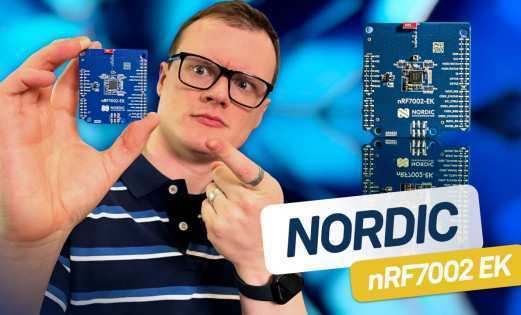

Leave your feedback...